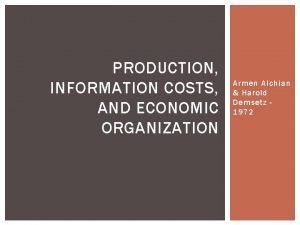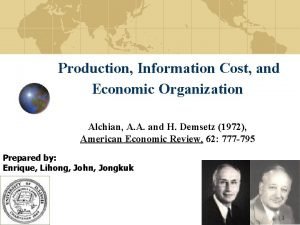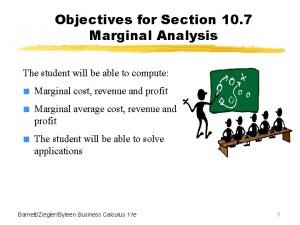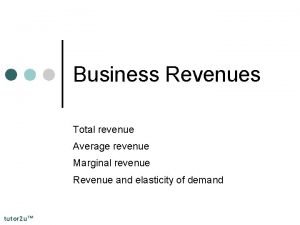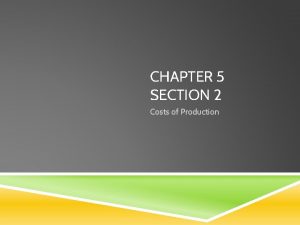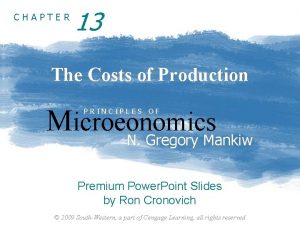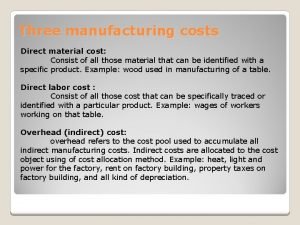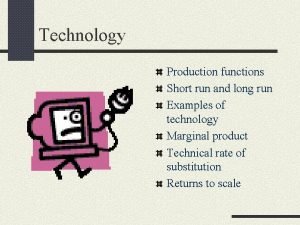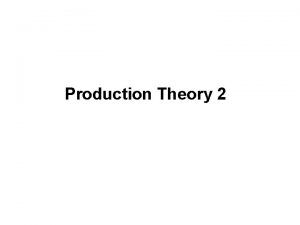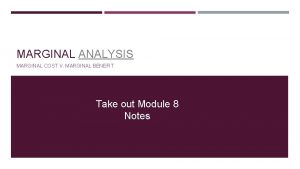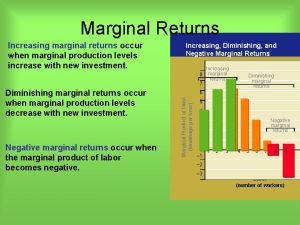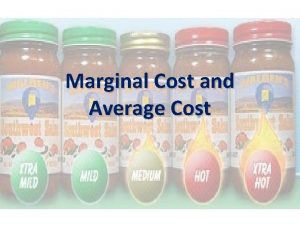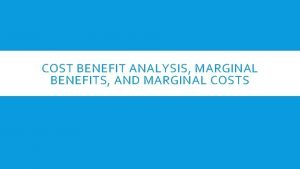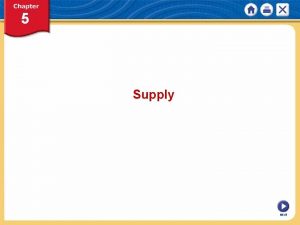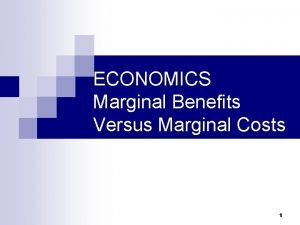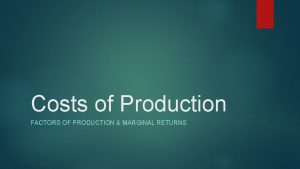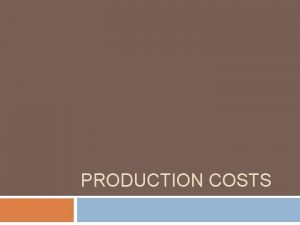Production and Costs Average and Marginal Product of













- Slides: 13

Production and Costs

Average and Marginal Product of Labor=Increase of Product when Employing an Additional Worker (≠ marginal benefit) Average Product of Labor or Product per Worker=Total Product/Number of Workers

Total, Marginal and Average Products Labor Total Product Marginal Product Average Product 1 (worker) 5 (dresses) 5 (d. added by 5 (d. p. w. ) additional worker) 2 3 4 5 6 7 12 21 28 33 36 37 7 9 7 5 3 1 6 7 7 6. 6 6 5. 3

TP Output per Worker Ga Sp ins of eci aliz atio n Output Total, Marginal and Average Products Q M APL s L Number of Workers rn ng tu hi e is R in al im in D arg MPL L 0 L 1 Number of Workers

Average and Marginal Product Suppose that 5 bakers bake 500 cupcakes. The average product of labor is 100 (500/5). A new baker is employed and total output goes up to 630 cupcakes. The marginal product of adding an additional worker is 130. The new average product of labor is 630/6=105. If the marginal product of labor is larger than 100, the average product of labor rises. If the marginal product of adding an additional worker is less than 100, the average product of labor falls. Then, the marginal product curve cross the average product curve when the average cost of labor is at the maximum.

Costs (5 machines $10 per machine, wage is $15 per worker) Labor 1 2 3 4 5 6 7 Total Product 5 12 21 28 33 36 37 Variable Cost 15 30 45 60 75 90 105 Total Costs 65 80 95 110 125 140 155

Average Costs (per unit cost) AVC=VC/Q AC=TC/Q If labor is the only Variable Input: Variable Cost AVC=VC/Q=(PL*L)/Q=PL/(Q/L)=PL/APL Marginal Costs The increase in total cost when increasing production by 1 unit (not when increasing labor by 1 unit!). MC=PL*(1/MPL) One additional worker adds MPL to product. It is needed 1/MPL units of workers to produce one unit of the product.

Cost Curves Labor Product MPL APL VC TC AVC AC MC 1 5 5 5 15 65 3 13 3 (1/5)*15 2 3 12 21 7 9 6 7 30 45 80 95 2. 14 6. 6 4. 5 2. 14 1. 67 4 5 28 33 7 5 7 6. 6 60 75 110 2. 14 125 2. 27 3. 9 3. 7 2. 14 3 6 7 36 37 3 1 6 5. 3 90 140 2. 5 105 155 2. 84 3. 8 4. 1 5 15

$ Total and Variable Costs TC VC Output

MC=PL*(1/MPL) MC AC Output per Worker $ per unit of output Relationship Between Marginal and Average Products and Costs MPL AVC APL AVC=PL/APL Q 0(L 0) Q 1(L 1) Output L 0 L 1 Number of Workers

Average and Marginal Cost Suppose the total cost of producing 5 units is $100. The average cost is $20. A new unit is produced and the total cost goes to $130. The marginal cost of producing an additional unit is $30. The new average cost is 130/6=25. If the marginal cost is larger than 20, the average cost rises. If the marginal cost of producing an additional unit is less than 20, the average cost falls. Then, the marginal cost cross the average cost curve when the average cost of labor is at the minimum.

$ Cost per unit of output Fixed Costs ATC FC AVC AFC Output

Cost per Unit Short Run and Long Run ACSR Q* AC long run Output
 Relationship between total average and marginal product
Relationship between total average and marginal product Pre post production
Pre post production Distinguish between average cost and marginal cost
Distinguish between average cost and marginal cost Production, information costs, and economic organization
Production, information costs, and economic organization Production information costs and economic organization
Production information costs and economic organization What is marginal revenue formula
What is marginal revenue formula Average
Average Chapter 5 section 2 costs of production
Chapter 5 section 2 costs of production Active learning 3 calculating costs
Active learning 3 calculating costs Types of cost savings
Types of cost savings Motion in a straight line formula
Motion in a straight line formula Direct materials cost
Direct materials cost Marginal product of labour
Marginal product of labour Marginal rate of technical substitution formula
Marginal rate of technical substitution formula



